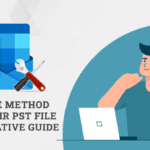
Even if you are not an SEO professional, you are probably aware that search engine optimization can make the difference between having a website that is invisible and having a website that is feared by the search engines.
SEO is a crucial component of the internet’s backbone – an incredible information highway that we use on a daily basis, often hundreds of times. SEO is a critical component of the internet’s backbone. Furthermore, for eCommerce businesses, search engine optimization (SEO) is a significant aspect in determining their level of success. Hire SEO experts so that they can help you out and pave a path for you that will lead your website to success.
If we went into detail about every area of eCommerce SEO, this post might easily run into hundreds of pages. As a result, rather than providing a comprehensive explanation, this tutorial is meant to act as a starter.
What is SEO for eCommerce?
SEO for eCommerce is a practice of making your online store more visible to people who search for it by using search engine optimization techniques (SERPs). You want to be at the top of the result page when people search for the products you sell in order to get more traffic to your website. This is called SEO.
With the help of paid search, you will be able to drive traffic to your site, but SEO is a lot cheaper than paid search marketing. Because what if Adblocker or ad blindness is turned on? If it’s less than that, the sponsored search will be less effective, so it is necessary that your site is search-friendly.
It is important that products and headlines should be optimized for search engine optimization and user experience. Also, you shouldn’t forget that it is necessary to optimize your metadata and internal link structure, as well as your navigation and internal links. To make your website more search engine friendly, each product should have its own page on your site that is designed to be seen by search engines.
The following are examples of static, non-product-oriented pages on your website that you should not overlook:
- Homepage
- About page
- F.A.Q. page
- Blog articles
- Help center answers
- Contact page
eCommerce SEO Best Practices
Keyword Research
To make sure that your product information is usable for both buyers and search engines, make sure that your sizes, measurements, colors, and prices, among other things, are easy to find, read, and understand. If your website has visitors from a lot of different places, think about whether to put measurements in standard, metric, or both units. Product photos or photography can be checked to make sure they are correct in terms of color and size by comparing them to real products.
In some stores, the price of a product isn’t shown to customers until they put something in their shopping bag, at which point the price is displayed. This could be because of a special promotion or because the retailer is trying to get around a manufacturer’s minimum advertised price rule. Hidden prices don’t have an impact on SEO, but if shoppers don’t see the prices on a product page, they’re likely to leave right away. This can lead to a higher bounce rate, which we’ll talk about in the next section.
Finally, make sure that your product information is always up-to-date. If a manufacturer gives you new information, you should try your best to use it! It’s not just good for customers, but it can also help you get more keywords on your page and improve your search engine rankings.
Create Unique Product Descriptions for Each Product
Due to the fact that there are so many identical items available, it’s only natural to sell them all when you operate an eCommerce shop. Consider a bottle that you are selling on your website. You will most likely be sharing hundreds of bottles with your customers and prospects. Even though some bottles will be made of plastic, some of the stainless steel, and still others of glass, because it is a bottle, the description will contain the vast majority of the same information in each case. As a result, the need for each of them to have an individual description becomes crucial as a result.
- Use the main keyword for 4 to 5 times.
- Keep the description somewhat lengthy.
- You can also write the offer you are giving with the specific, because that will also set it apart from other similar products.
Easier Navigation
The navigation structure of the website, or we can say how the category or product web pages are organized, is one of the main things to focus on while designing an eCommerce website. It is necessary that the website you are designing be very easy to navigate for both the people who are visiting and the search engines that are going to crawl it. Whenever you are working on the eCommerce site architecture, there is one crucial thing that you needed to keep in mind: make sure that the product page should be no more than three pages clicks away from the homepage.

When you build a page architecture in this way, the navigation on your site will be easy and simple. Anybody can easily navigate the site without any problems, and the site architecture will also remain simple. The result is not just a better user experience, but it also ensures that product pages obtain the required authority from the homepage, making it easier for search engines to categorize and index the pages.
Social Media Marketing Strategy
In recent times, after the pandemic, everyone came to the conclusion that social media is very useful and it’s one of the best marketing strategies for an eCommerce site.
When you do marketing through social media, you have various types of social media in your arsenal to boost brand recognition and, because of this, the audience size will also increase in order to promote sales. The loyalty of the customer towards your brand will also increase and, because of that, they will become brand advocates and spread knowledge about the product and services offered by the company. All the major social media networks out there, e.g., Facebook, Twitter, Instagram, Tiktok, Reddit, and LinkedIn, are perfect for marketing organic content as well as paid content.
It is necessary that you create images and videos that are shareable because if you do that, people will link to your profile from their profiles on their reels, stories, posts, videos, etc. There are multiple ways nowadays that people can link to your profile. A social media manager will help you with this. Aside from this, it is necessary that you should create and publish original material on your profile because it will encourage other users in the same niche and market sector to promote you organically through their own social media accounts.
On-page SEO
The basis of any on-page SEO is the content that you create and write for your website. What Google takes into consideration the most is not just a list of keywords, but it is necessary that it be organized in such a way that Google recognizes the efforts you put into it and rewards it accordingly.
It is very necessary that the headlines you are using for any material are accurate and give proper information about the product. It shouldn’t mislead the reader. The subheading should also be accurate and there shouldn’t be any lengthy details. Also, if needed, break the paragraph into parts and apply bullet points. Adequate support is provided in order to accomplish this goal. Because of all of this exercise you did on your page, it will be easy to read for both people as well as booths, and this will lead to a greater search engine ranking outcome.
High-Quality Link Building for E-Commerce
Going back to eCommerce website off-page SEO, backlinks are a goldmine for SEO experts attempting to improve their search engine ranking.
It is referred to as a backlink when a website on one of its pages includes a link to another website on another page of the same website. Additional terms for these connections include “incoming links” and “inbound links.”
As a general rule, the greater the number of times your website is linked to other websites, the higher your SEO results will be.
But there is one important detail: it is critical that you build quality links from other dependable, high-ranking websites in order to be successful. Google is an astute cookie, and it will discover if you are engaging in questionable backlinking practices (and punish you accordingly).
The following tips for your new link-building plan should be taken into consideration:
- Contribute guest blogs to other websites on similar topics, allowing your followers to engage with you.
- Begin an influencer marketing campaign in order to generate favourable feedback and shoutouts from bloggers and other media outlets.
- Make contact with related websites and ask for a link to a certain page on your website in exchange for a link to theirs.
- Fill out several submission forms and submit your website to various directories and listing websites.
Customer Review
Product reviews might help to increase conversions on your product pages. According to scientific evidence, approximately 90% of purchasers believe they are more inclined to purchase things that have reviews, even if those reviews are not wholly positive. Allowing clients to express themselves after they have purchased something is, therefore in your best interests!
It may surprise you to learn that allowing reviews may also help with SEO, which has led to review management becoming a standard eCommerce SEO tip. Critical phrases are frequently included in customer evaluations on a natural basis, and customers are very prone to doing so. Even if they are unlikely to use synonyms or long-tail keywords that are already present on your website, they may do so in order to improve your search engine ranking (or at least send the right kind of signal to search engines).
Page Speed Optimization: Fast Loading Pages is Important
The first thing you need to keep in mind is that the website needs to load faster. And if you run an eCommerce website, this is the most crucial thing because when you have a website that loads slowly, it will drive people away from your website, and not only that, it will also increase the bounce rate and conversion rates from a technical SEO point of view. A study showed that if your website takes more than 3 seconds to load, people will leave the page, and also, in one of the surveys conducted, it is clearly shown that people only wait for 10 seconds before a slow-loading website.
Indeed, as Search Engine Watch points out, “visitors expect web pages to load in two seconds or less.” If your eCommerce site doesn’t meet this goal, you’re in trouble. There are a lot of ways for people who own and market eCommerce websites to improve the performance of their websites.
Implement your new eCommerce SEO strategy
Search engine optimization (SEO) is a field that is always changing. In order to retain growth over time, your eCommerce store must be able to respond to these fluctuations. All of these tactics, on the other hand, are well-known industry best practices that have been shown to be resistant to changes in the Google algorithm over time.
Because these eCommerce SEO recommendations will take time to implement, it is vital to develop an eCommerce SEO strategy that will be able to withstand algorithmic changes while also ensuring the success of your company.
Following the creation of your SEO strategy, you should immediately begin putting it into action. When it comes to SEO, time is of the essence; the sooner you begin, the better off your store will be. Are you prepared to boost the number of visitors to your website?








